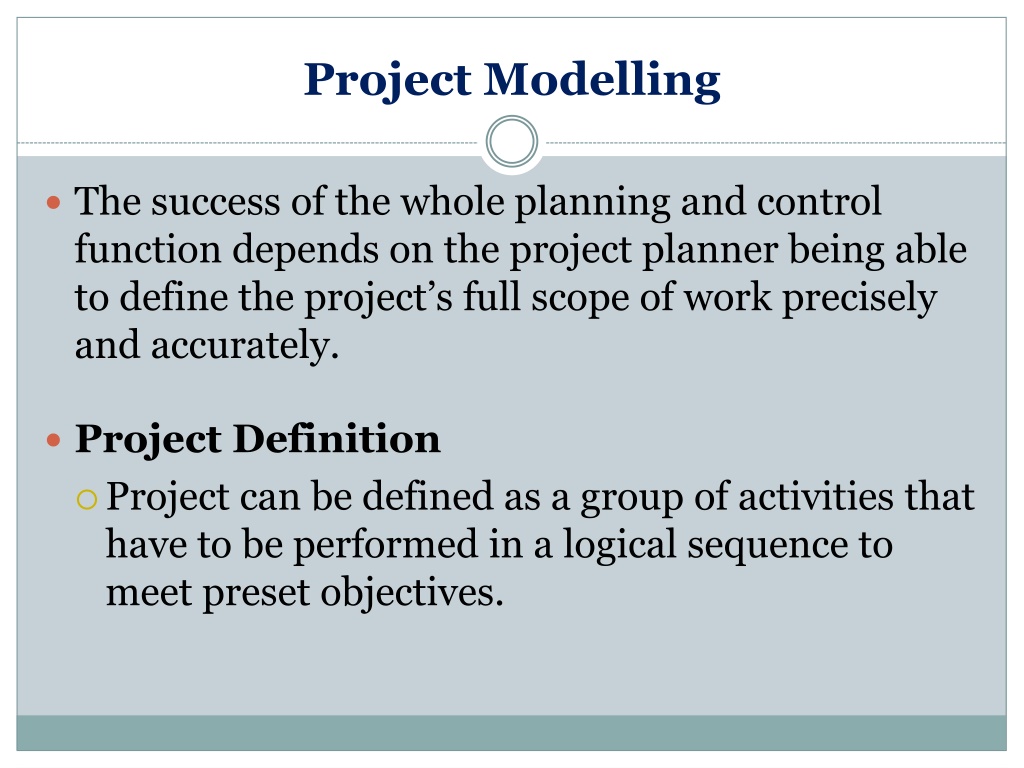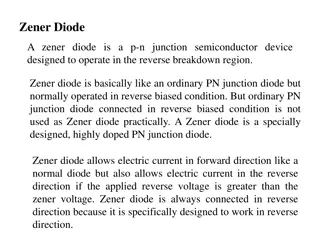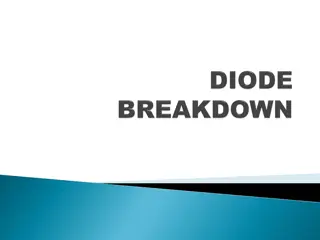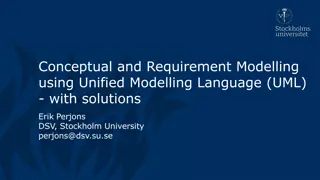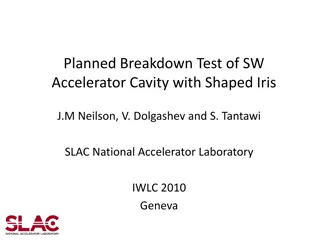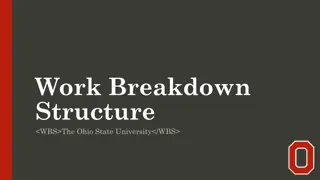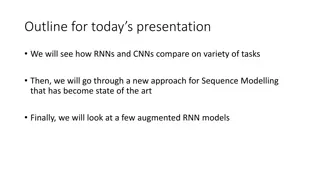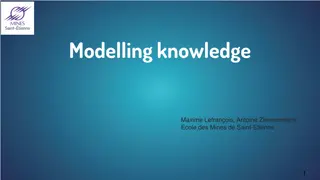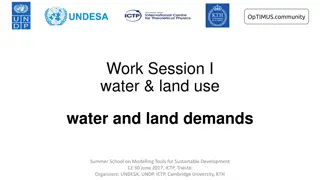Project Modelling and Work Breakdown Structures
In project management, precise project definition is crucial for successful planning and control. Project modelling involves utilizing tools like Work Breakdown Structure (WBS) to efficiently define project scopes and hierarchies. By breaking down the project into smaller elements of work, WBS aids in understanding and organizing tasks. Additionally, understanding activity dependencies and sequences is vital for effective utilization of the breakdown structure. An example of task dependencies at a petrol station highlights the importance of logical sequencing in project activities.
Download Presentation

Please find below an Image/Link to download the presentation.
The content on the website is provided AS IS for your information and personal use only. It may not be sold, licensed, or shared on other websites without obtaining consent from the author.If you encounter any issues during the download, it is possible that the publisher has removed the file from their server.
You are allowed to download the files provided on this website for personal or commercial use, subject to the condition that they are used lawfully. All files are the property of their respective owners.
The content on the website is provided AS IS for your information and personal use only. It may not be sold, licensed, or shared on other websites without obtaining consent from the author.
E N D
Presentation Transcript
Project Modelling The success of the whole planning and control function depends on the project planner being able to define the project s full scope of work precisely and accurately. Project Definition Project can be defined as a group of activities that have to be performed in a logical sequence to meet preset objectives.
Project Modelling The Work Breakdown Structure (WBS) provides a useful tool to address this need efficiently.
Project Modelling The project is represented by a hierarchical structure that is designed to logically sub-divide all the work-elements of the project.
Project Modelling The goal of the project is placed at the top of the diagram and then it is sub-divide into smaller elements of work at each lower level of breakdown.
Project Modelling At the lowest level of the EBS the element of work is called work package. Each element is identified by a short description.
Project Modelling The Work Breakdown Structure is useful for the general understanding of the project but we need a different view of the same structure in order to be able to make an efficient utilization of the breakdown structure. We need to know which activities must be done in a specific order (precedence) and which activities could be done in parallel. a group of activities that have to be performed in a logical sequence ...
Example: Stopping at Petrol Station Construct dependency table for the following jobs in attending to a motor car at a service station Duration [sec] 30 10 120 45 25 20 15 80 100 15 60 25 30 50 5 10 Preceding activity Activity Description Driver arrives Select brands of oil and petrol Fill petrol tank Prepare bill Receive payment Wash windscreens Polish windscreens Check tyre pressures Inflate tyres Open bonnet Check oil requirements Add oil Add distilled water to battery Fill radiator Close bonnet Driver departs A B C D E F G H I J K L M N O P
Example: Stopping at Petrol Station Construct dependency table for the following jobs in attending to a motor car at a service station Duration [sec] 30 10 120 45 25 20 15 80 100 15 60 25 30 50 5 10 Preceding activity None Activity Description Driver arrives Select brands of oil and petrol Fill petrol tank Prepare bill Receive payment Wash windscreens Polish windscreens Check tyre pressures Inflate tyres Open bonnet Check oil requirements Add oil Add distilled water to battery Fill radiator Close bonnet Driver departs A B C D E F G H I J K L M N O P
Example: Stopping at Petrol Station Construct dependency table for the following jobs in attending to a motor car at a service station Duration [sec] 30 10 120 45 25 20 15 80 100 15 60 25 30 50 5 10 Preceding activity None A Activity Description Driver arrives Select brands of oil and petrol Fill petrol tank Prepare bill Receive payment Wash windscreens Polish windscreens Check tyre pressures Inflate tyres Open bonnet Check oil requirements Add oil Add distilled water to battery Fill radiator Close bonnet Driver departs A B C D E F G H I J K L M N O P
Example: Stopping at Petrol Station Construct dependency table for the following jobs in attending to a motor car at a service station Duration [sec] 30 10 120 45 25 20 15 80 100 15 60 25 30 50 5 10 Preceding activity None A B Activity Description Driver arrives Select brands of oil and petrol Fill petrol tank Prepare bill Receive payment Wash windscreens Polish windscreens Check tyre pressures Inflate tyres Open bonnet Check oil requirements Add oil Add distilled water to battery Fill radiator Close bonnet Driver departs A B C D E F G H I J K L M N O P
Example: Stopping at Petrol Station Construct dependency table for the following jobs in attending to a motor car at a service station Duration [sec] 30 10 120 45 25 20 15 80 100 15 60 25 30 50 5 10 Preceding activity None A B C, L Activity Description Driver arrives Select brands of oil and petrol Fill petrol tank Prepare bill Receive payment Wash windscreens Polish windscreens Check tyre pressures Inflate tyres Open bonnet Check oil requirements Add oil Add distilled water to battery Fill radiator Close bonnet Driver departs A B C D E F G H I J K L M N O P
Example: Stopping at Petrol Station Construct dependency table for the following jobs in attending to a motor car at a service station Duration [sec] 30 10 120 45 25 20 15 80 100 15 60 25 30 50 5 10 Preceding activity None A B C, L D A F A H A J K, B J J L, M, N E, G, I, O Activity Description Driver arrives Select brands of oil and petrol Fill petrol tank Prepare bill Receive payment Wash windscreens Polish windscreens Check tyre pressures Inflate tyres Open bonnet Check oil requirements Add oil Add distilled water to battery Fill radiator Close bonnet Driver departs A B C D E F G H I J K L M N O P
Example: Stopping at Petrol Station Draw the relevant network of activities using given precedencies. Duration [sec] 30 10 120 45 25 20 15 80 100 15 60 25 30 50 5 10 Preceding activity None A B C, L D A F A H A J K, B J J L, M, N E, G, I, O Activity Description Driver arrives Select brands of oil and petrol Fill petrol tank Prepare bill Receive payment Wash windscreens Polish windscreens Check tyre pressures Inflate tyres Open bonnet Check oil requirements Add oil Add distilled water to battery Fill radiator Close bonnet Driver departs A B C D E F G H I J K L M N O P B C Start A F G H J
Network analysis In order to analyze the network, we need to include more pieces of information in a convenient form. There is an convention that activities are represented as boxes. The box is subdivided to give information about the name/code of the activity, its duration, earliest start, latest start, earliest finish, latest finish and total float. Early start Early finish Total Float Activity Name Duration Late Start Late Finish
Network analysis Early start Early finish Total Float Activity Name Duration Late Start Late Finish The earliest start for an activity is determined by the earliest finish of preceding activities. Earliest finish is obtained by adding the activity duration.
Network analysis Early start Early finish Total Float Activity Name Duration Late Start Late Finish The latest finish for an activity is determined by the latest start for succeeding activities. The latest start is obtained by subtracting the activity duration. The overall completion time for the project is the earliest finish for the last activity.
Network analysis Example: Consider the following project and draw the activity network: Preceding activity none none A B C, D Activity Duration [hours] A B C D E 2 4 4 6 4 What is the overall completion time for this project?
Example Draw the activity network including dummy activities Start and End: A 2 C 4 St E 4 0 0 End B 4 D 6
Example Calculation of the earliest possible start and finish of each activity: 2 6 0 2 A 2 C 4 10 14 14 14 0 0 St E 4 0 0 End 0 4 4 10 B 4 D 6
Example We have completed the forward pass through the activity network: 0 2 2 6 A 2 C 4 0 0 10 14 14 14 St 0 E 4 0 End 0 4 4 10 B 4 D 6
Example Backward pass: calculation of the latest possible start and finish of each activity: 2 6 0 2 A 2 C 4 10 14 14 14 0 0 St E 4 0 0 End 0 4 4 10 B 4 D 6
Example Calculation of the earliest possible start and finish of each activity: 2 6 0 2 A 2 C 4 4 6 6 10 10 14 14 14 0 0 St E 4 0 0 0 End 14 14 10 0 14 0 4 4 10 B 4 4 D 6 0 10 4
Example We have completed the backward pass through the activity network: 0 2 2 6 A 2 C 4 4 6 6 10 0 0 10 14 14 14 St 0 E 4 0 End 0 0 10 14 14 14 0 4 4 10 B 4 D 6 0 4 4 10
Example Calculate the float for each activity (=late start-early start): 0 2 2 6 A 2 C 4 4 4 4 6 6 10 0 0 10 14 14 14 St 0 E 4 0 0 0 0 End 0 0 10 14 14 14 0 4 4 10 B 4 D 6 0 0 0 4 4 10
Example Indicate the critical path (activities whit zero float): 0 2 2 6 A 2 C 4 4 4 4 6 6 10 0 0 10 14 14 14 St 0 E 4 0 0 0 0 End 0 0 10 14 14 14 0 4 4 10 B 4 D 6 0 0 0 4 4 10
Example Useful check-points: There is always at least one critical path The total float on each branch of the network remains constant 0 2 2 6 A 2 C 4 4 4 4 6 6 10 0 0 10 14 14 14 St 0 E 4 0 0 0 0 End 0 0 10 14 14 14 0 4 4 10 B 4 D 6 0 0 0 4 4 10
Critical Path Method/CPM 1. Develop a list of activities that make up the project. 2. Determine the immediate predecessor activities for each activity in the project. 3. Estimate the completion time for each activity. 4. Draw a network depicting the activities and immediate predecessors listed in steps 1 and 2. 5. Using the network and activity time estimates, determine the earliest start time and earliest finish time for each activity by making forward pass through the network. The earliest finish time for the last activity in the project identifies the total time required to complete the project. 6. Using the project completion time identified in step 5 as the latest finish time for the last activity, make backward pass through the network to identify the latest start time and latest finish time for each activity. 7. Use difference between the latest start time and earliest start time for each activity to identify the slack time available for the activity. 8. The critical path activities are the activities with zero slack.
Critical Path Method/CPM CriticalPath Method Determines the overall time needed for the project completion Facilitates the development of the activity schedule for the project Indicates critical activities Shows us how much time reserve (slack/float) we have for each activity Helps us to control and manage the relevant project
Network analysis Example 2: Draw the network and identify the critical path. Activity Preceding Activity Duration [weeks] A B C D E F G H I None None None A B B C D, E F, G, H 7 8 6 6 6 8 4 7 3
Network analysis Example 2: 0 1 1 7 7 8 7 1 8 13 6 14 A D 14 0 14 21 7 21 H 8 0 8 14 6 14 E 21 0 21 24 3 24 24 0 En 0 24 24 0 0 0 0 0 0 0 0 0 8 8 8 I St B 24 8 5 13 16 8 21 F 0 11 C 11 6 6 17 6 11 G 17 10 4 21
Network analysis Example 2: CPM network provides us a very practical, easy and straightforward tool for project control and what if analysis. What is likely to happen when ? Activity B started 1 week later. Activity D started on time (as scheduled) but due to some operational problems it takes one week more than estimated. Activity I can be completed in 2 weeks only.
Network analysis Example 2: Activity B started 1 week later. 0 1 1 7 7 8 7 1 D 6 8 13 A 14 0 H 7 14 21 14 21 8 0 8 14 6 14 E 21 0 21 24 3 24 24 0 En 0 24 24 0 0 St 0 0 0 0 0 0 8 8 8 I B 24 0 8 5 16 8 21 F 13 0 6 6 6 10 11 C 11 11 G 4 17 17 21 It will delay the whole project by one week.
Network analysis Example 2: Activity D started on time (as scheduled) but due to some operational problems it takes one week more than estimated. 0 1 1 7 7 8 7 1 D 6 8 13 A 14 0 H 7 14 21 14 21 8 0 8 14 6 14 E 21 0 21 24 3 24 24 0 En 0 24 24 0 0 St 0 0 0 0 0 0 8 8 8 I B 24 0 8 5 16 8 21 F 13 0 6 6 6 10 11 C 11 11 G 4 17 17 21 It is not a problem and we can still complete it on time.
Network analysis Example 2: Activity I can be completed in 2 weeks only. 0 1 1 7 7 8 7 1 D 6 8 13 A 14 0 H 7 14 21 14 21 8 0 8 14 6 14 E 21 0 21 24 3 24 24 0 En 0 24 24 0 0 St 0 0 0 0 0 0 8 8 8 I B 24 0 8 5 16 8 21 F 13 0 6 6 6 10 11 C 11 11 G 4 17 17 21 It could make the whole project one week shorter.
Network analysis Example 3: Draw the network and identify the critical path. Activity Preceding Activity Duration [weeks] A B C D E F G H None A A A B C D E, F 5 4 7 4 5 2 4 7
Network analysis Example 3: What if analysis: Activity B started 1 week later. It will delay the whole project by one week. Activity G started 4 weeks later than scheduled. It is not a problem and we can still complete it on time. Activity A can be completed in 3 weeks only. It could make the whole project 2 weeks shorter. Activity C will be completed in 6 weeks only. There are two critical paths. Therefore, without further changes on the sub-path B-E there is no chance for shortening the total time of the project.
Network analysis Homework: Draw the network and identify the critical path. Activity A B C D E F G H I Preceding Activity None None A, B B B C D D, E F, G, H Duration [weeks] 4 6 7 8 5 5 7 8 4
